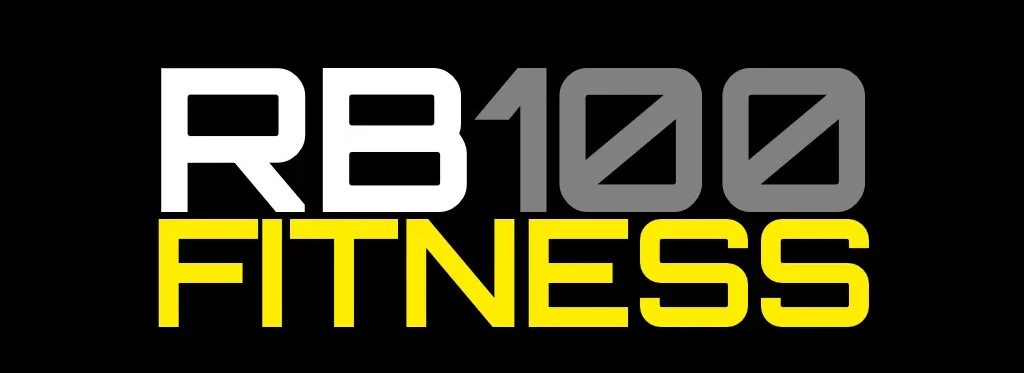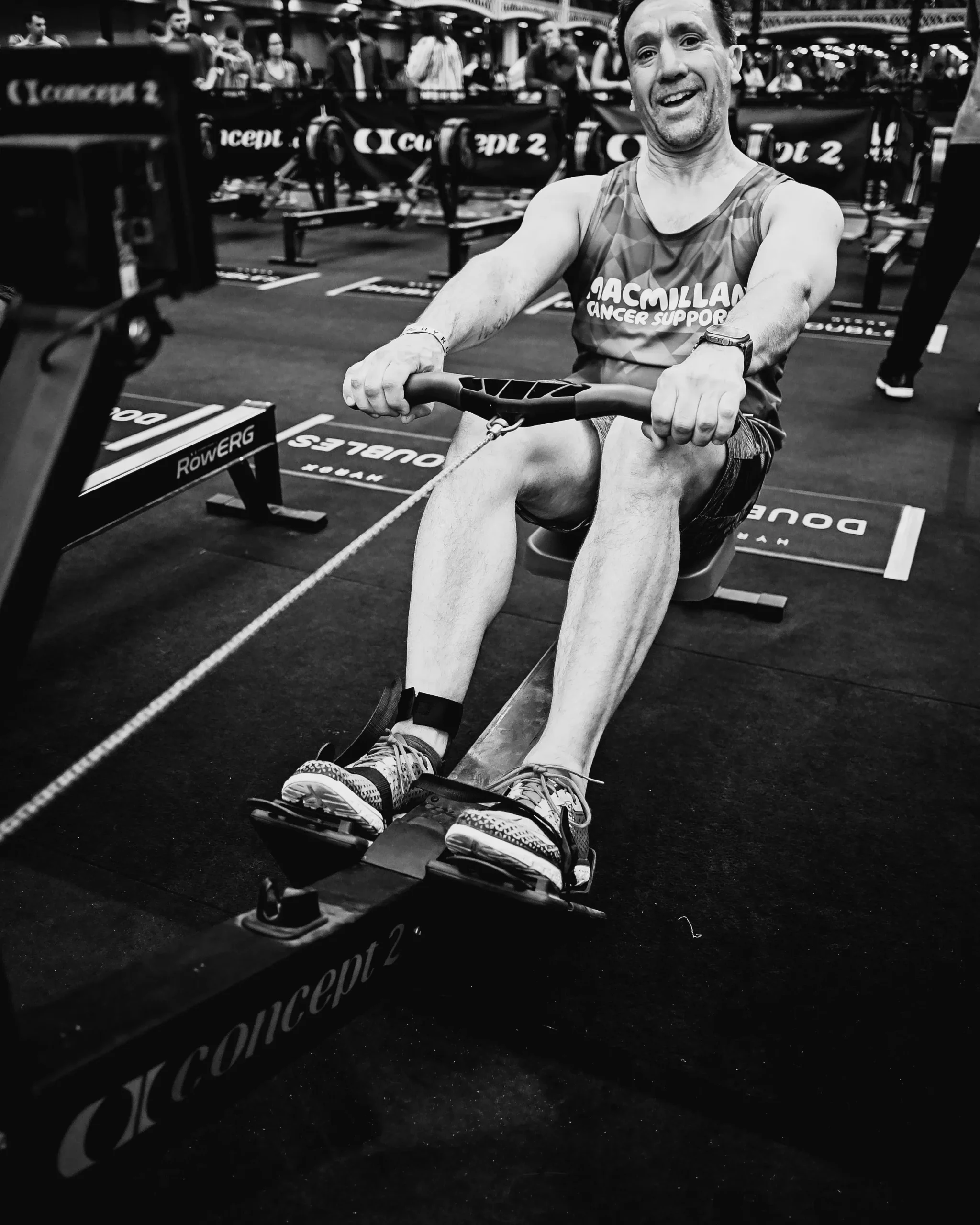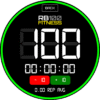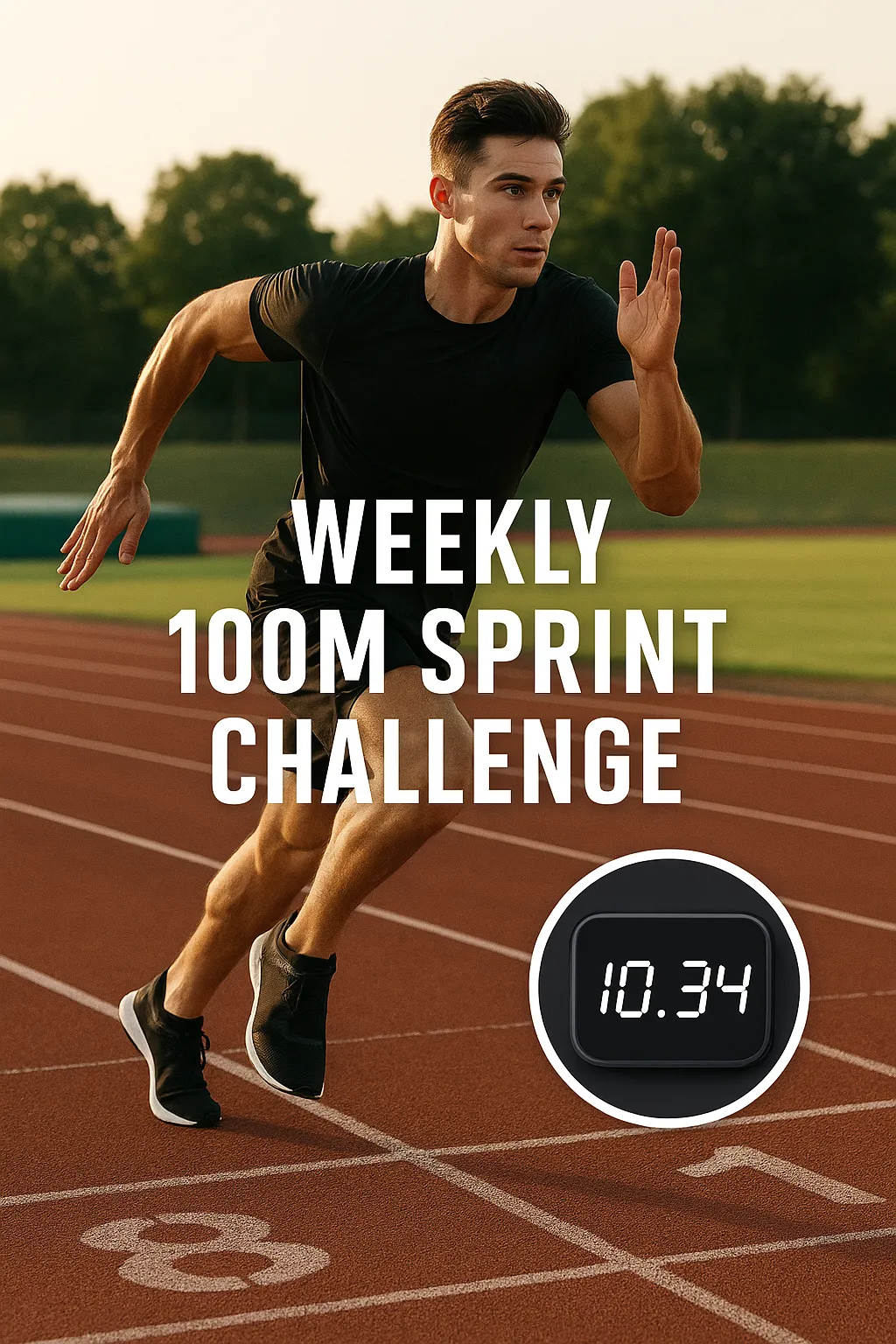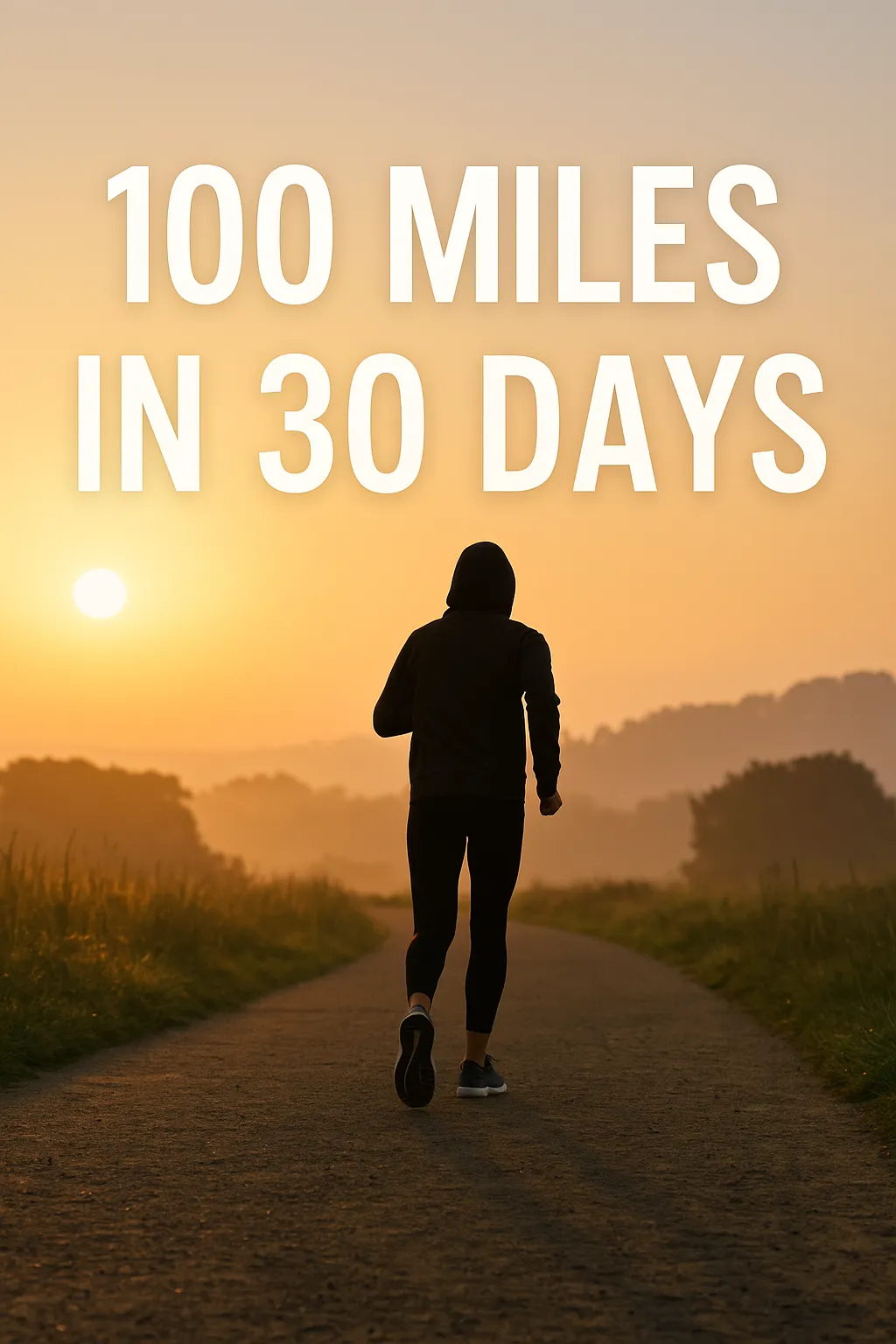Introduction: Precision Over Power
The HYROX 1,000 m row is one of the most deceptive stations in the race.
Many athletes see it as a recovery window, others as a chance to make up time both can go wrong.
The key is balance: enough power to stay efficient, but smooth enough to recover for the next kilometre.
“The row isn’t about max effort it’s about rhythm, breathing, and conserving your engine.” — RB100.Fitness
Why the Row Matters
At this point in the race, fatigue is building. Your sled legs are heavy, and your lungs are working overtime.
The row gives you a chance to stabilise breathing and find rhythm before the final heavy carries and lunges.
When executed well, it can reset your pacing and help you maintain composure heading into the last quarter of the event.
Linked reading: HYROX Running Engine: How to Hold Pace Across 8×1 km
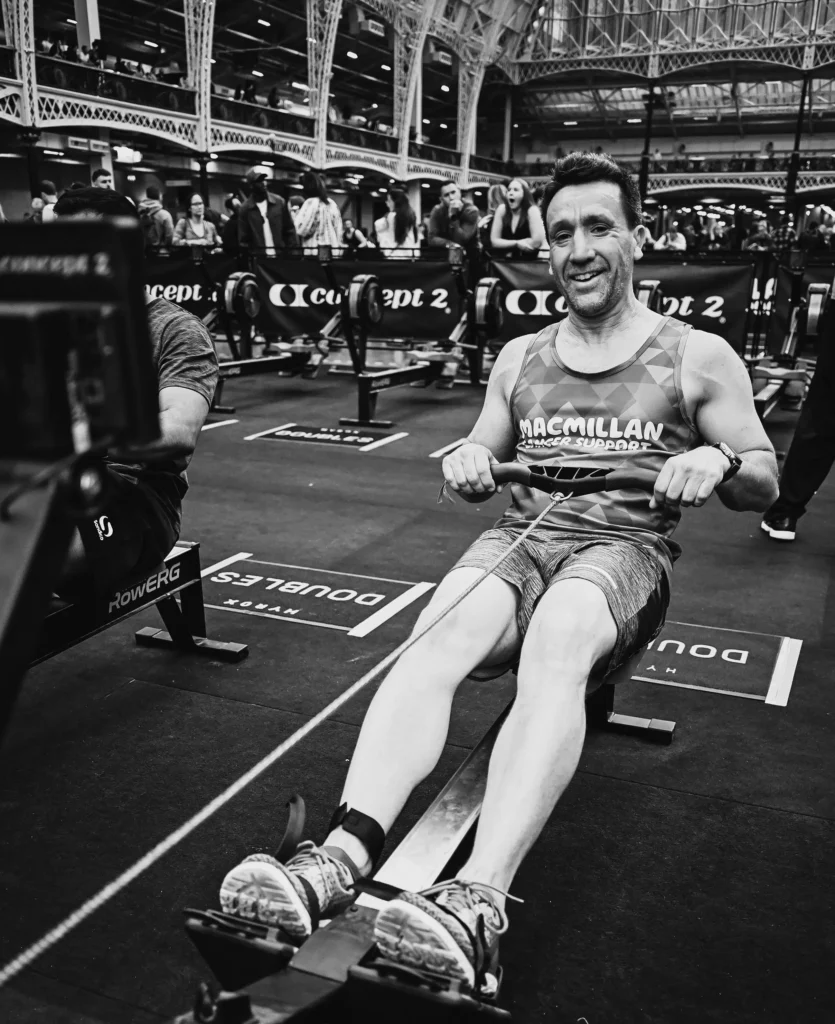
1. Technique: Leg Drive First, Arms Second
Rowing efficiency is built from sequencing.
Think: legs → hips → arms, then reverse on the return.
Key cues:
- Push with the legs not pull with the arms.
- Keep the handle path straight.
- Maintain a neutral spine and relaxed shoulders.
- Don’t rush the recovery; the slide should feel twice as long as the drive.
“Rowing rewards rhythm not aggression.” — RB100.Fitness
2. Stroke Rate and Split Targets
Your goal is to row economically, not heroically.
Use the monitor as feedback, not pressure.
| Division | Stroke Rate (spm) | Average Split (per 500 m) | Total Time Target |
|---|---|---|---|
| Open Men | 24–26 | 1:48–1:55 | 3:45–3:55 |
| Open Women | 22–24 | 2:00–2:10 | 4:00–4:15 |
| Pro Men | 26–28 | 1:40–1:45 | 3:20–3:40 |
| Pro Women | 24–26 | 1:50–1:58 | 3:40–3:55 |
Aim for consistency your second 500 m should be within 5 seconds of the first.
If you start too hard, your heart rate will spike, and recovery on the next run will suffer.
Linked reading: Heart Rate, Pace or RPE: The Best Way to PACE a HYROX
3. Common Technique Mistakes
| Mistake | Problem | Fix |
|---|---|---|
| Pulling early with arms | Wastes power, burns grip | Drive from legs first |
| Rushing recovery | Heart rate spikes | Double the length of recovery phase |
| Over-leaning at catch | Lower back strain | Maintain upright torso angle |
| High stroke rate | Inefficient and unsustainable | Stay between 24–28 spm |
| Looking down | Collapses posture | Keep eyes forward, chest tall |
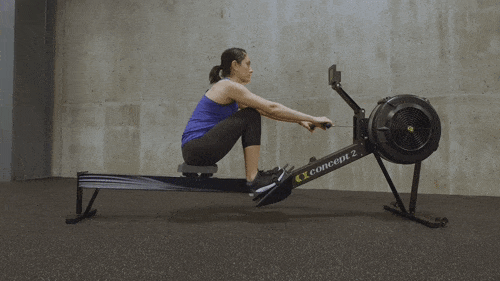
4. Breathing and Rhythm
Link your breathing to the stroke cycle:
- Exhale during the drive (when pushing with the legs).
- Inhale during the recovery (as the handle moves forward).
This promotes rhythm and lowers oxygen cost, helping you stay composed under fatigue.
If your breathing becomes erratic, your splits will fluctuate reset cadence before increasing power.
5. Transition Strategy
Once you hit 1,000 m, it’s tempting to sprint the last 100 m resist the urge.
Instead, use the final 10 strokes to:
- Slow cadence.
- Focus on breathing recovery.
- Mentally prepare for the transition to the next run.
Then exit smoothly stand tall, shake arms, and jog back to the run lane.
Use the first 200 m of the next kilometre to reset posture and breathing rhythm.
“The best transitions start before you put the handle down.” — RB100.Fitness
Linked reading: Brick Sessions for HYROX: Run-to-Station and Station-to-Run
6. Training the Row for HYROX
You don’t need endless long rows you need repeatable submax effort intervals to simulate the race stimulus.
Session 1: Race-Pace Repeats
- 5×500 m @ 90% race pace (1:48–1:55)
- 90-sec rest between intervals
Session 2: Strength Row Intervals
- 6×250 m @ moderate pace (2:00–2:10)
- Focus: powerful leg drive, slow return
Session 3: Brick Simulation
- 1 km Run → 1 km Row → 1 km Run
- Repeat ×2
- Goal: keep second row within 10 sec of first
For complete programming, see Weekly Engine Builder: The HYROX Cardio Template
7. Testing and Monitoring Progress
Check improvements using your average split and stroke rate efficiency.
You should be able to drop 2–4 seconds per 500 m while keeping stroke rate stable a clear sign of improved endurance and form.
Record your splits alongside heart rate to track how fitness translates to pacing efficiency across the season.
Summary: Smooth Equals Strong
The HYROX row isn’t about domination it’s about discipline.
Control your form, breathe with rhythm, and treat the 1,000 m as your bridge between power and pace.
If you exit the row calm, you’ll enter the next station in control.
“Efficient rowers don’t fight the machine they flow with it.” — RB100.Fitness
About HYROX Season 2025/2026
- Race distance: 8×1 km runs + 8 stations
- The row remains a key pacing checkpoint worldwide
Explore the RB100 Fitness Racing Events Calendar to plan your race calendar.
